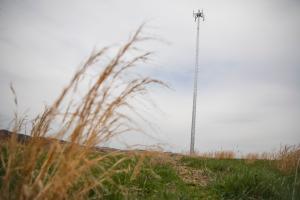Spotlight PA is an independent, nonpartisan newsroom powered by The Philadelphia Inquirer in partnership with PennLive/The Patriot-News, TribLIVE/Pittsburgh Tribune-Review, and WITF Public Media. Sign up for our free newsletters.
HARRISBURG — Everyone in Pennsylvania has access to broadband — at least, according to the definition set by state lawmakers in the early 2000s.
But ask residents of rural areas about their internet speeds, and you’ll likely hear about slow connections and outdated technology.
What happened?
In 1993, the state legislature approved a sweeping measure they hoped would guarantee universal access to high-speed internet in Pennsylvania.
As a recent Spotlight PA investigation reported, the law cut a deal with the existing landline phone companies, who agreed to make broadband available across the entire state — even in unprofitable rural areas — in exchange for less regulation and the chance to earn higher profits.
Ten years later, with the law due to expire, legislators debated whether to renew it. That involved setting themselves an impossible task: trying to predict the internet speeds of the future.
The 1993 law defined broadband as a minimum download speed of 1.544 megabits per second — blazing fast at the time. By the early 2000s, though, some industry experts warned lawmakers that the original standard would soon be obsolete.
At a hearing over the proposed renewal in 2002, consultant Lee Selwyn testified that technology was changing quickly: internet speeds once considered state-of-the-art were becoming hopelessly outdated in just five or six years. Still, “no one was seriously talking about modifying the target,” Selwyn recalled in a recent interview with Spotlight PA.
Some representatives of the telephone companies argued at the time that 1.544 megabits per second was already faster than many customers wanted. The companies also had a financial incentive to oppose upping the standard, because higher minimum speeds would have required them to spend more to upgrade the infrastructure they owned.
During a 2003 hearing, Rep. Fred McIlhattan (R., Clarion), who represented a rural district in Western Pennsylvania, worried that “rural will only get one shot probably for quite a while.”
Industry representatives had likened the broadband mandate to a requirement to build a highway to every community in the state.
“If that highway is built too small, then my folks are going to be back behind the eight ball,” McIlhattan said.
One phone company executive reassured him that Pennsylvania’s definition of broadband was “a lot more aggressive” than the federal government’s.
That was true in 2004, when the bill passed. In the years that followed, however, the federal standard increased twice while the state’s stayed the same.
By 2015, the state’s final deadline for companies to upgrade their networks, the federal standard for download speeds was 16 times faster than Pennsylvania’s. The state’s minimum upload speed, added by lawmakers in 2004, also lagged the federal definition.
A bipartisan state report from 2020 confirmed that the phone companies complied with the law. In interviews with Spotlight PA, industry representatives said the state’s definition of broadband is only a baseline and most customers can get far higher speeds.
“Unfortunately, you can’t manage technological change in statute — it’s living and breathing,” said David Bonsick, a lobbyist for the Pennsylvania Telephone Association, which represents most of the companies required by law to provide broadband.
David Malfara, CEO of Big Bang Broadband, a Florida-based consulting firm, largely agrees. Pennsylvania should have taken a different approach, he said. Instead of locking in a standard for the next decade in 2004, he argues, lawmakers should have created a more flexible definition that could have been updated.
Malfara was one of the experts who warned lawmakers in the early 2000s that demand for faster internet speeds would keep increasing. “We saw the growth from the early 1990s,” he recently told Spotlight PA. “It was going like a house on fire.”
Lawmakers received his testimony, he recalled in an email, with a “blank, non-expressive response.”
Since 2016, Rep. Pam Snyder (D., Greene) has introduced three bills to increase the state’s definition of broadband speeds set in 2004; none of them have been brought up for a committee vote. A similar bill sponsored by Rep. Perry Stambaugh (R., Perry) died in committee last year.
The speeds written into law in the early 1990s put Pennsylvania ahead of its time, Snyder said. “But they adopted it and then moved on.” Those speeds “don’t even come close to providing people what they need in today’s world,” she said.
WHILE YOU’RE HERE… If you learned something from this story, pay it forward and become a member of Spotlight PA so someone else can in the future at spotlightpa.org/donate. Spotlight PA is funded by foundations and readers like you who are committed to accountability journalism that gets results.
